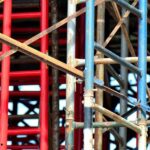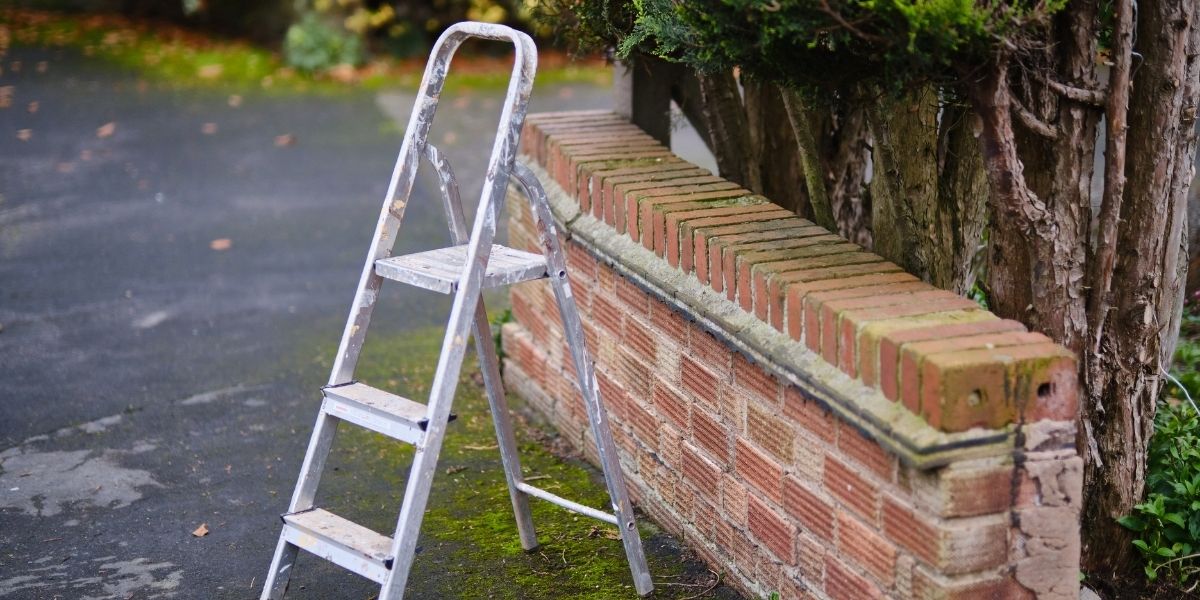Fibreglass tower scaffolds
A fibreglass tower scaffold, commonly also known as a GRP (Glass Reinforced Plastic) scaffold tower is a system of various components consisting of frames, horizontal braces, diagonal braces, and platform decks.
They are assembled in sequence to provide a quick, temporary scaffold system to access areas at height where the task at hand would not be safe, or practical for a ladder.

These types of towers, along with similar aluminium types must be erected by a trained and competent person when used typically in a construction site situation.
As other personnel may be using the scaffold, the main contractor has a duty of care to ensure what is supplied is safe and fit for purpose.
One of these aspects is ensuring that the person erecting the tower scaffold has been given the necessary training, passed any testing and is holding a current accreditation card.
The industry standard for tower scaffold erection currently is PASMA (Prefabricated Access Suppliers and Manufacturers Association).
The PASMA association provide training all over the UK, and also work with tower manufacturers to improve designs and increase safety. You can read more about PASMA in our article here.
In a domestic situation, this particular training is not needed. It is only really undertaken by homeowners that wish to develop further competence with their towers. Training is usually approximately one day.
In most domestic settings, the homeowner or jobbing builder will hopefully adhere to the tower manufacturers assembly instructions.
These instructions will also include the limitations of the tower which will include the maximum height and loadings.

Fibreglass and GRP scaffold towers are a popular choice for many contractors as they are lightweight and easy to assemble.
They can be quickly put together and provide a safe working platform for your team.
The fibreglass construction also means that these towers are weatherproof, meaning they can be used in all weather conditions.
This makes them a popular choice for both indoor and outdoor projects. These towers can be customised to meet your individual needs, so you are sure to get the perfect tower for your project.
Fibreglass and GRP towers also come in a range of different sizes, meaning you will find one that fits your project perfectly.
Towers can be simply erected using basic equipment in very little time which makes them particularly useful if there is an urgent need for access platforms in remote locations.
Why use a fibreglass tower?
Fibreglass or GRP scaffold towers are most often recognised by their yellow and blue colouring. This obviously distinguishes them from their silver coloured aluminium counterparts.
Fibreglass and aluminium scaffold towers both benefit by being much lighter than their steel tower equivalents.

The main reason for using a fibreglass scaffold tower is when works need to be carried out on electrical systems.
This is because the fibreglass material has insulating properties and so does not conduct electricity, unlike aluminium which is an efficient conductor of electricity.
This is why some cables have an aluminium core. For a person to have an electric shock, a live circuit needs to be completed and earthed.
If the person working on the tower happened to be on an aluminium type and cut or touched a live cable, the current would pass through the person, through the aluminium tower and be grounded causing an electric shock.
For a person working on a fibreglass tower, cutting or touching the live cable would initiate a shock.
However, being on a tower that has insulating properties, the current will not pass through it and be grounded, so saving the person from severe injury or even death.
Fibreglass or GRP scaffold towers also benefit from being resistant to corrosion which means they can be freely stored outside and can be used in all weather conditions.
Harsh conditions like coastal salt spray or even slightly acidic rain can have a noticeable detriment to steel or aluminium towers.
Aluminium towers will fare better than steel but not fibreglass in these conditions. Fibreglass towers are also often used in industrial chemical environments due to their inert behaviour to corrosion.
Fibreglass and GRP tower considerations
Whilst these materials make fibreglass and GRP scaffold towers resistant to corrosive substances like salt water spray and atmospheric pollutants, the fibreglass used is not always strong enough.
Increased materials loads mean fibreglass/GRP tower scaffolds may not always provide adequate stability.
They are also vulnerable to damage if kicked or dropped because fibreglass has a relatively low impact resistance compared to other plastics such as PVC.
This can often lead to fibreglass or GRP scaffold towers becoming unusable and requiring replacement, which can be costly.
In contrast, steel or aluminium scaffold towers are much more durable and less susceptible to damage, often making them a more cost effective solution in the long run if no works are anticipated on electrical systems.
Overall, fibreglass or GRP scaffold towers have a number of disadvantages compared to steel and aluminium scaffold towers.
Whilst they may be more aesthetically pleasing and resistant to corrosion, they are not as strong or durable, meaning they may not be the best option for all applications.
For heavy-duty tasks where stability and durability are key considerations, steel or aluminium scaffold towers are the best option.
These options will be able to sustain a more robust environment and carry heavier loadings.
Fibreglass or GRP scaffold towers should instead be used for lighter-duty tasks where simple electrical access and corrosion resistance are more important factors rather than loading with concrete blocks for example.
Final thoughts
In conclusion, fibreglass or GRP scaffold towers have advantages and disadvantages. They are strong enough for people and light loading. They are reasonable durable if looked after, but can be expensive.
They are also easy to assemble and can be used for a variety of purposes. However, they may not be suitable for all applications.
It is important to consider the needs of each project before deciding whether fibreglass or GRP scaffold towers are the best option compared to a steel or aluminium alternative.
I have an article on aluminium tower scaffolds here. I also have an article on steel scaffold towers here.
If planned works are electrical in nature, a fibreglass scaffold tower will be the go to choice. If building a concrete block wall in a back garden for instance, an aluminium or steel would be the preferred option.












